Abstract
A new, quantitatively significant intermediate formed during lignin degradation by Streptomyces viridosporus T7A was isolated and characterized. In Streptomyces-inoculated cultures, the intermediate, an acid-precipitable, polyphenolic, polymeric lignin (APPL), accumulated in the growth medium. The APPL was a water-soluble polymer probably consisting of a heterogeneous mixture of molecular weight components of ≥20,000. APPLs were precipitable from culture filtrates after they had been acidified to pH <3 to 5. Noninoculated controls yielded little APPL, but supernatant solutions from inoculated cultures produced quantities of APPL that correlated with the biodegradability of the lignocellulose type. Maximal recovery of APPL was obtained from corn lignocellulose, reaching 30% of the initial lignin present in the substrate. APPLs contained small amounts of carbohydrate, organic nitrogen, and inorganic materials. The lignin origin of APPLs was confirmed by chemical analyses, which included acidolysis, permanganate oxidation, elemental analyses, functional group analyses, nuclear magnetic resonance spectroscopy, and 14C isotopic techniques. Analyses of APPLs from corn lignocelluloses showed that S. viridosporus-degraded APPLs were lignin derived but significantly different in structure from APPLs derived from uninoculated controls or from a standard corn milled-wood lignin. Degraded APPLs were enriched in phenolic hydroxyl groups and, to a small extent, in carboxyl groups. Degradative changes appeared to be largely oxidative and were thought to involve substantial cleavage of p-hydroxy ether linkages and methoxyl groups in the lignin.
Full text
PDF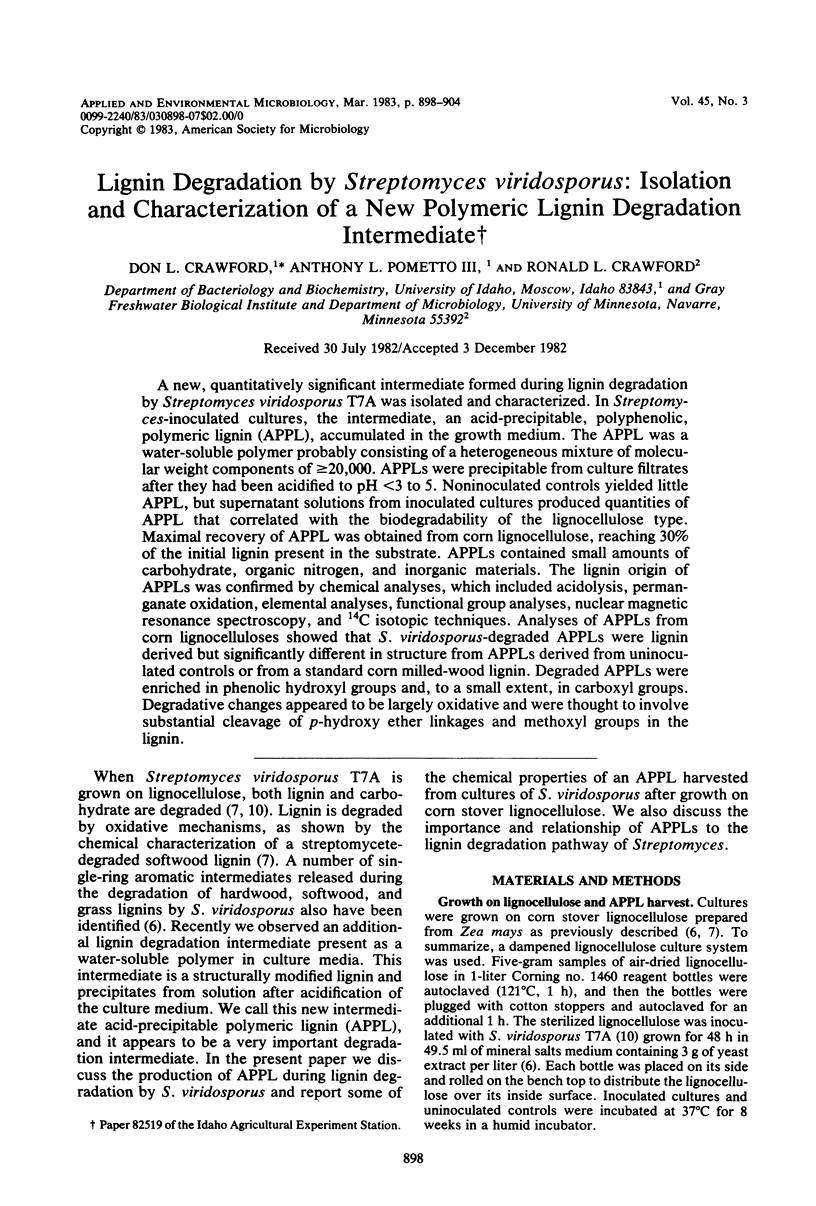
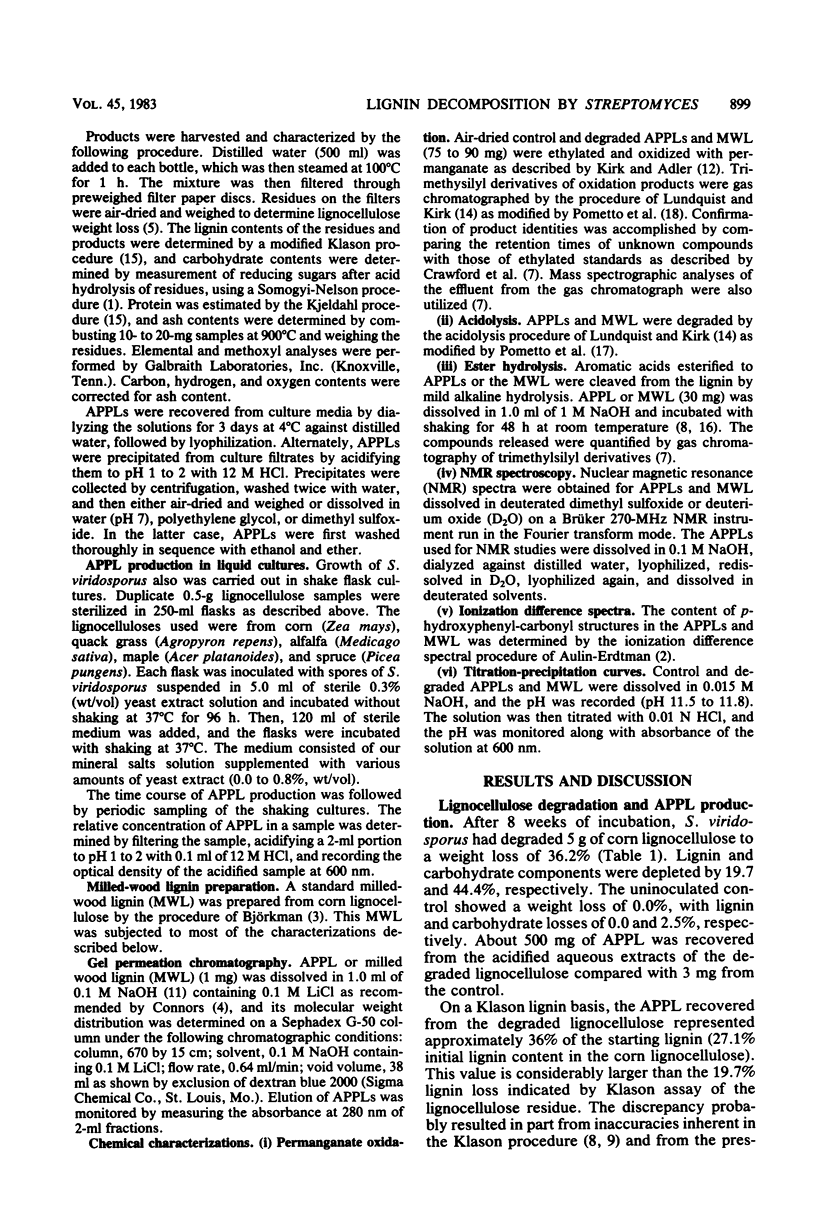
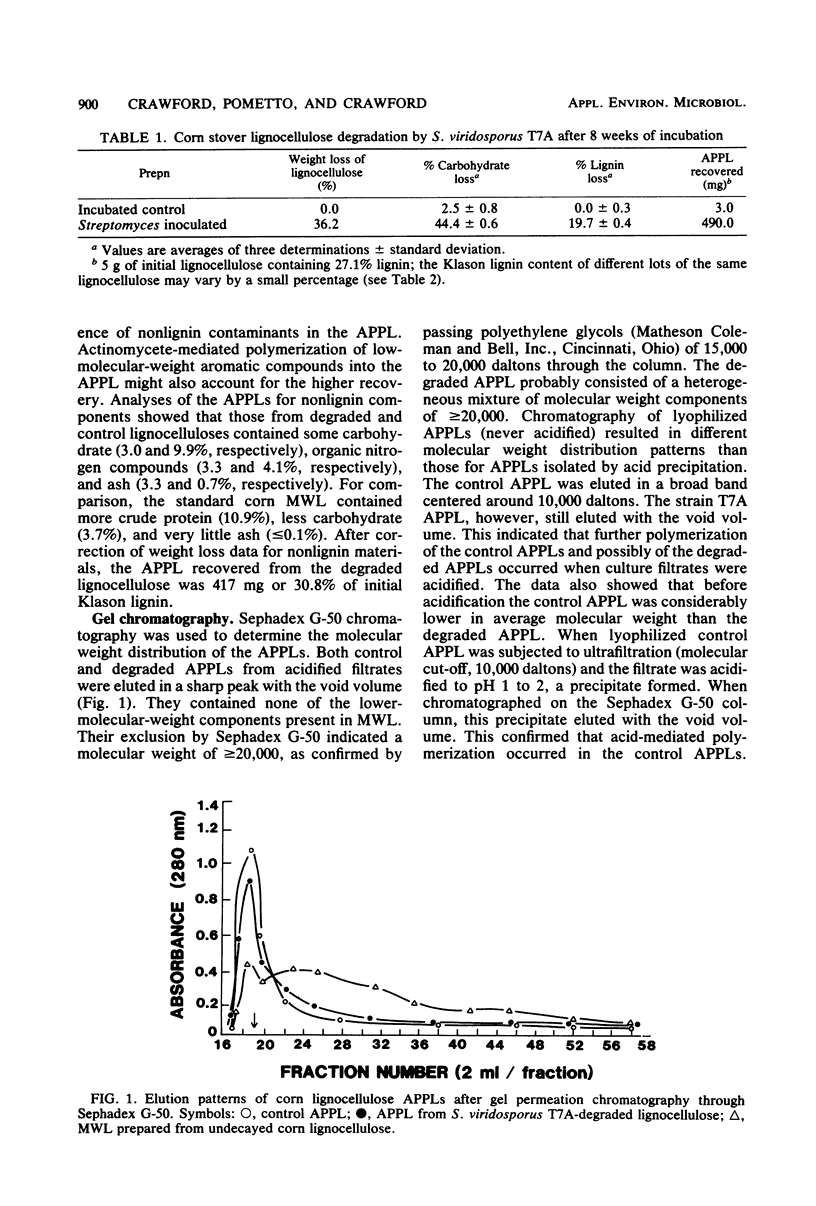
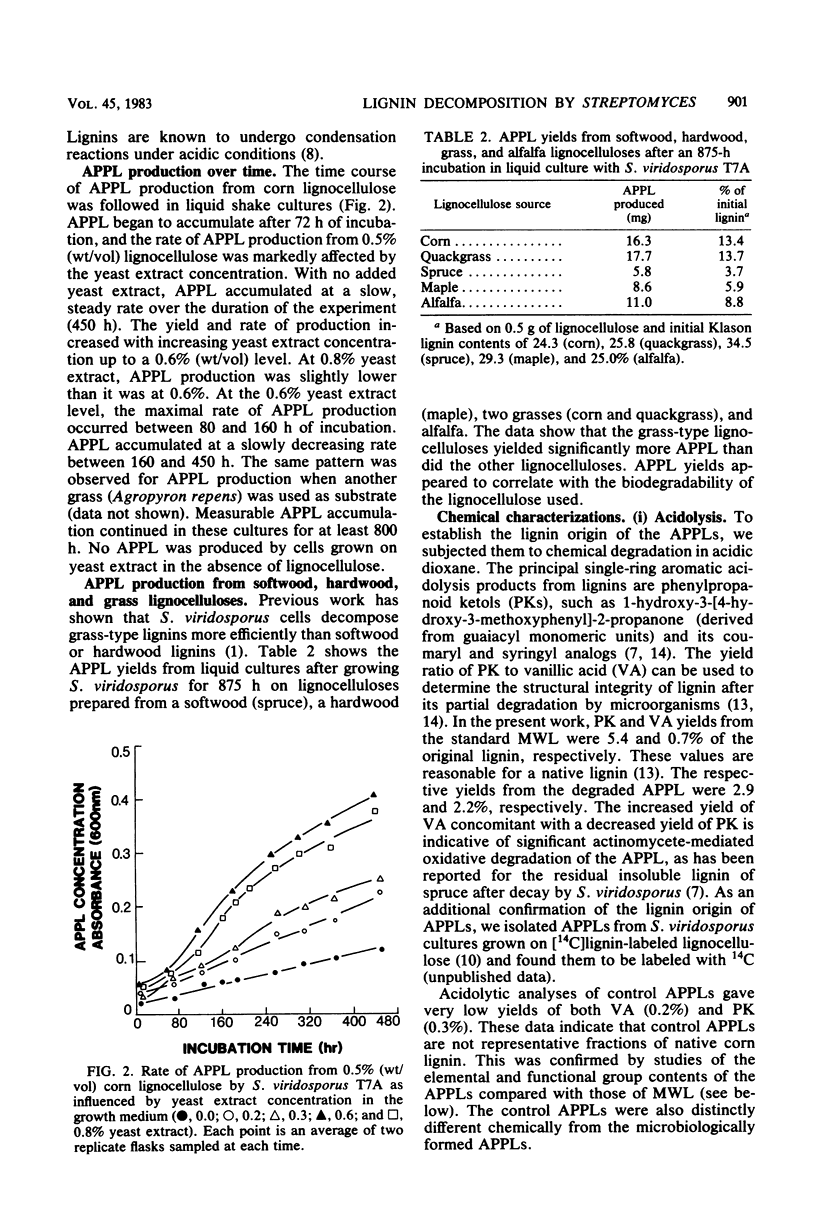
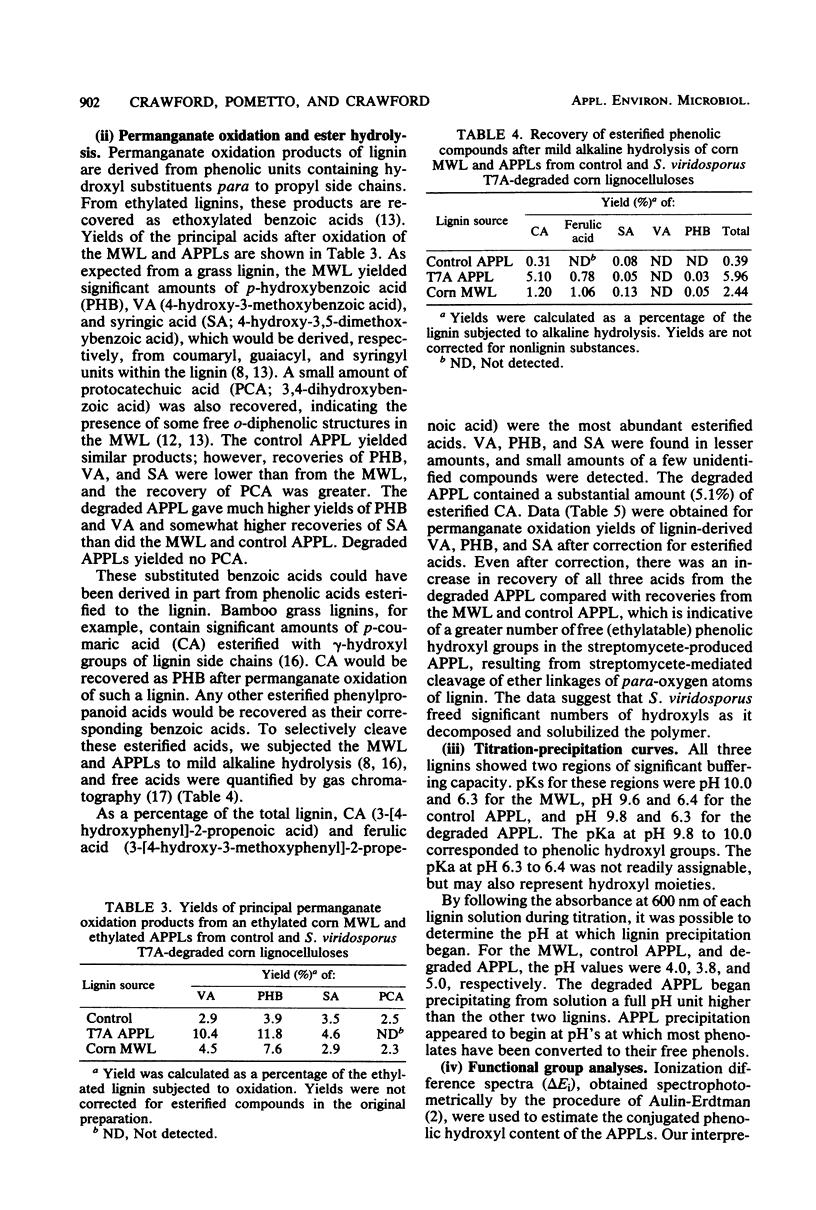
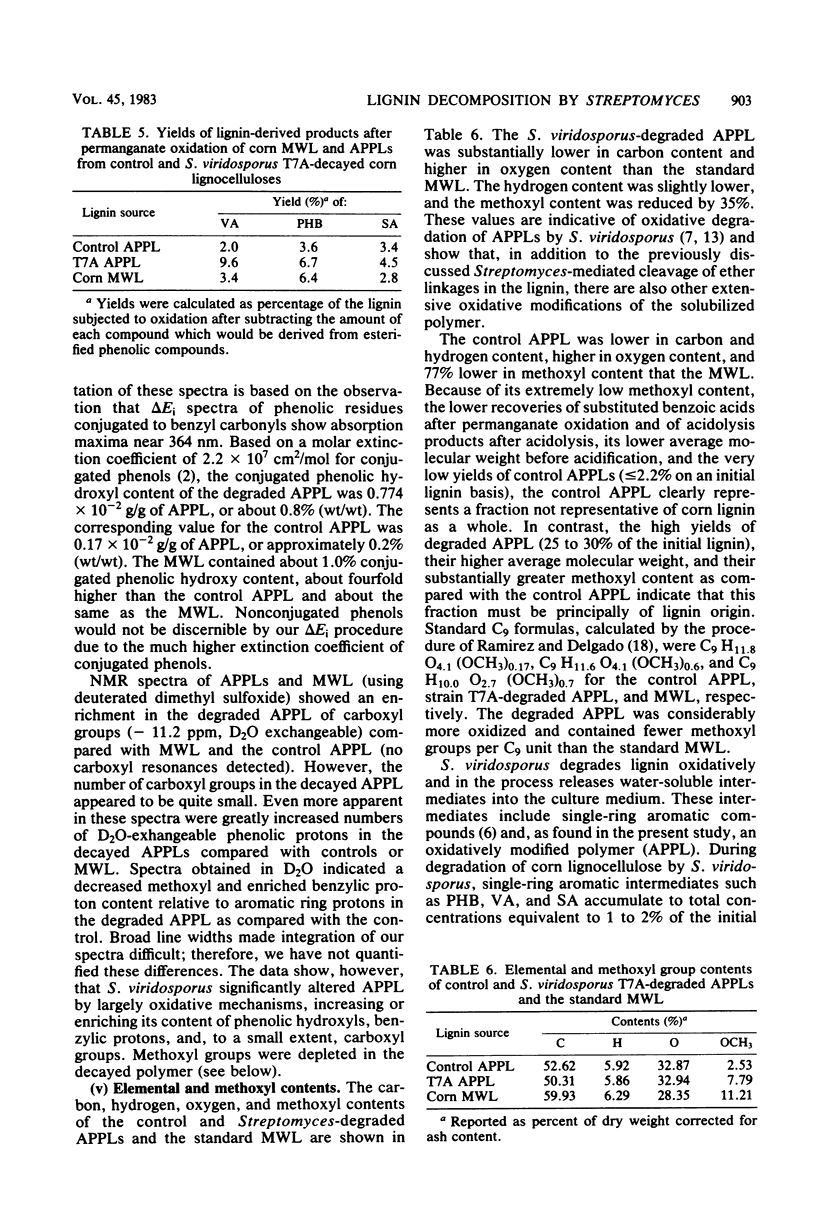
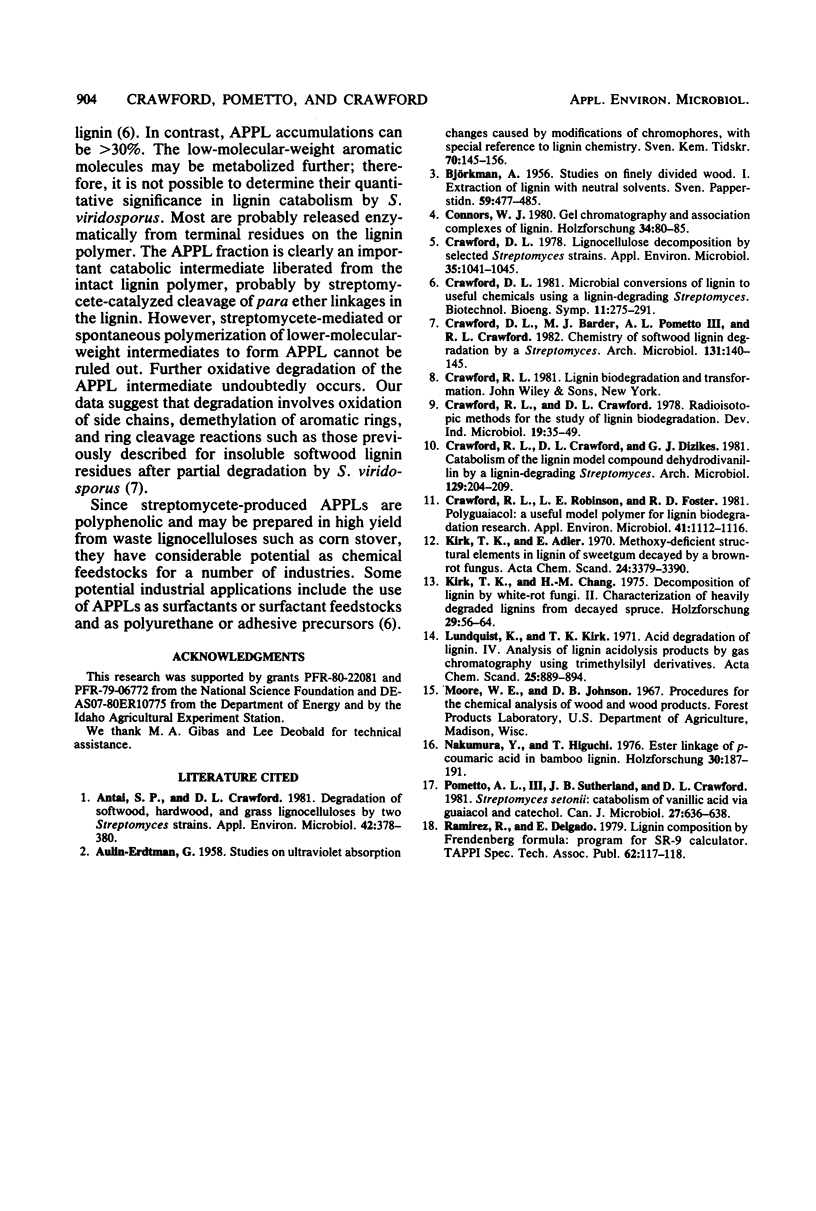
Selected References
These references are in PubMed. This may not be the complete list of references from this article.
- Antai S. P., Crawford D. L. Degradation of softwood, hardwood, and grass lignocelluloses by two streptomyces strains. Appl Environ Microbiol. 1981 Aug;42(2):378–380. doi: 10.1128/aem.42.2.378-380.1981. [DOI] [PMC free article] [PubMed] [Google Scholar]
- Crawford D. L. Lignocellulose decomposition by selected streptomyces strains. Appl Environ Microbiol. 1978 Jun;35(6):1041–1045. doi: 10.1128/aem.35.6.1041-1045.1978. [DOI] [PMC free article] [PubMed] [Google Scholar]
- Crawford R. L., Robinson L. E., Foster R. D. Polyguaiacol: a useful model polymer for lignin biodegradation research. Appl Environ Microbiol. 1981 May;41(5):1112–1116. doi: 10.1128/aem.41.5.1112-1116.1981. [DOI] [PMC free article] [PubMed] [Google Scholar]
- Lundquist K., Kirk T. K. Acid degradation of lignin. IV. Analysis of lignin acidolysis products by gas chromatography, using trimethylsilyl derivatives. Acta Chem Scand. 1971;25(3):889–894. doi: 10.3891/acta.chem.scand.25-0889. [DOI] [PubMed] [Google Scholar]
- Pometto A. L., 3rd, Sutherland J. B., Crawford D. L. Streptomyces setonii: catabolism of vanillic acid via guaiacol and catechol. Can J Microbiol. 1981 Jun;27(6):636–638. doi: 10.1139/m81-097. [DOI] [PubMed] [Google Scholar]


